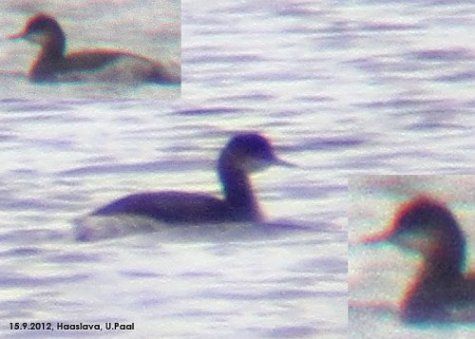Birder's diary - 15.09
Birder Margus Ots, Linnuvaatleja.ee
Translation: Liis
Although the weather was supposed to be on the poor side I still went to observe birds at Mehikoorma at Lämmijärve lake. The moderate adverse wind did not disturb the birds much and from Cape Pnevo a surprising number of passerines started to cross the lake. At times the whole sky was filled with dots. In the course of six hours I managed to count nearly 300 000 migrant birds. Because of the long distance (2 km) it was mostly not possible to determine the species but the majority of the migrants were probably chaffinches (Fringilla coelebs), in the throng were also many tits, thrushes, swallows, finches and smaller passerines. Jays (Garrulus glandarius) also came across quite nicely – altogether >1100 individuals. The whole of this mill of passerines was followed by a rather large number of sparrowhawks (Accipiter nisus) and hobbies (Falco subbuteo). Right in front of us a number of finches and tits fell victim to the raptors. If the weather will be anything like reasonable plans are to do some proper scoping in Mehikoorma this autumn.
Black-necked grebe at the Haaslava fish ponds, even in the far-off foggy photo the characteristic head and beak shape of the species is visible(Photo: Uku Paal)
Already since the end of August information has been coming from the Haaslava fish ponds in Tartumaa that a young black-necked grebe (Podiceps nigricollis) is present there. Since it is not possible to get in between the ponds for observation, identification of the species by telescoping from behind the far-off fence has not been finally approved yet. Confusion is also caused by the fact that in the same pond there are 2 young horned grebes (Podiceps auritus) and distinguishing these two species from afar is not the easiest task. So today we again went to spy from behind the fence and fortunately the grebe showed up a little better and it became clear that we had to do with a black-necked grebe! From where did it come here? This rare visitor has now been seen in five places in Estonia this year. In the nearby Aardla lake a pair was active in summer some time ago and it was already thought that the species would stay to breed in the area but the birds disappeared somewhere. Maybe they moved to Haaslava to breed? But adult birds were not seen here in summer.









